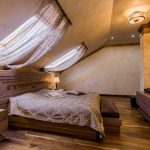The concept of biophilic design has transformed the way architects and designers envisage urban spaces. It has become a beacon of sustainable, liveable, and healthy solutions for the demands of modern urban living. By integrating nature into the fabric of built environments, biophilic design can foster well-being and sustainability in urban real estate. In a world where cities are getting denser and people’s bond with nature appears more strained, employing this design approach could be the key to creating healthier, more livable spaces.
Understanding Biophilic Design
Biophilic design is a sustainable approach to architectural design that seeks to connect people and nature within our built environments and spaces. It takes inspiration from natural elements and processes to enhance the aesthetic and functional aspects of buildings. The term "biophilia" was first introduced by the psychologist Edward O. Wilson, implying ‘love of life or living systems.’ The design approach based on this concept aims to evoke this inherent affection towards nature in urban dwellers by incorporating natural elements like plants, water, light, and other forms of nature into built environments.
Topic to read : How to Integrate Electric Vehicle Infrastructure into Commercial Real Estate Developments?
While the thought of biophilic design might bring to mind lavish green walls or indoor waterfalls, it’s far more than just aesthetic additions. It’s about creating spaces that enhance occupants’ health and well-being, boost productivity, and even contribute to energy sustainability.
Incorporating Biophilic Elements in Urban Buildings
There are several ways to incorporate biophilic elements into urban buildings. A common and obvious method is the use of plants and greenery. This could be through indoor potted plants, rooftop gardens, or even green walls. Incorporation of natural light is another vital element of biophilic design. This can be achieved through large windows, skylights, and open spaces that allow sunlight to permeate the building.
In the same genre : What Are the Opportunities for Real Estate Development in Post-Mining Areas?
Other elements of biophilic design may include the use of natural materials and colors, the incorporation of water through features like fountains or ponds, and the creation of views or vistas that provide a connection to the outside environment. Even sounds and scents can be used – think of the soothing sound of falling water or the fresh scent of pine or lavender.
The Green Boost: Energy Efficiency and Sustainability
Biophilic design isn’t just about making spaces look better – it’s also about making them function better. One of the critical benefits of this design ethos is its potential for energy efficiency and sustainability. Buildings designed with biophilic principles often use less energy than traditional structures.
Natural light is not just beneficial for human health, but it can also lead to significant energy savings by reducing the need for artificial lighting. Similarly, the incorporation of plants and greenery can help regulate building temperature, reducing reliance on heating and cooling systems.
Moreover, biophilic design can aid in reducing water usage. Installing green roofs or walls can act as a natural insulator, reducing the need for air conditioning in the summer and heating in the winter.
Biophilic Design for Health and Well-Being
There’s a growing body of research suggesting that incorporating natural elements into our built environment has a profound impact on our health and well-being. In a world where many of us spend the majority of our time indoors, biophilic design can help mitigate some of the harmful effects of this indoor lifestyle.
Natural light, for example, plays an essential role in regulating our body’s circadian rhythms, which control our sleep-wake cycle. Exposure to natural light can improve sleep quality, boost mood, and enhance productivity. Similarly, plants can improve indoor air quality by absorbing pollutants and releasing oxygen.
Moreover, the mere sight of nature – whether it’s a potted plant on your desk or a view of a garden from your window – can reduce stress and anxiety, contributing to mental well-being. Therefore, the introduction of biophilic design elements can have a tangible impact on the physical and mental health of urban dwellers.
Bringing Biophilic Design into Urban Real Estate
The benefits of biophilic design are clear, and the demand for such spaces in urban real estate is growing. Developers and architects have the opportunity to leverage this design approach to create healthier, more sustainable, and more attractive properties.
From small-scale residential buildings to large-scale commercial properties, biophilic design principles can be adapted to all kinds of spaces. It’s not just about adding plants or maximizing natural light – although these are important elements – but about creating a holistic design that connects people with nature and contributes to their well-being.
For urban real estate developers and architects, this might mean incorporating more green spaces in their designs, using sustainable materials, creating views and vistas that connect occupants with the outside world, and designing spaces that maximize natural light and ventilation.
In the end, biophilic design is not just about transforming the physical appearance of our urban landscapes. It’s a profound concept that marries the benefits of nature with the demands of urban living. It takes us back to our roots, reminding us that, despite our urban lifestyles, we are still deeply connected to the natural world.
The Impact of Biophilic Design on Real Estate Value
Attracting potential property buyers or tenants now goes beyond offering a well-built structure with a great location. The criteria have expanded to include elements such as sustainability, wellness, and a connection to nature, all of which can be achieved through biophilic design.
In recent years, biophilic design has not only become a trend but a valuable asset in the world of real estate. Properties that incorporate biophilic design principles often see a significant increase in value. This is largely due to increased demand from buyers and renters who are more conscious of the impact of their living or working environments on their health and well-being.
The benefits of biophilic design, such as improved air quality, enhanced natural light, and a stronger connection to nature, are also attractive selling points for properties. These features are known to boost occupant productivity, reduce stress levels, and even contribute to a decrease in energy consumption. The latter can translate into substantial savings on energy bills, another attractive feature for potential tenants and buyers.
Investing in green buildings that incorporate biophilic design principles can provide a competitive edge in the real estate market. Commercial properties, for instance, can use biophilic design to attract high-profile tenants, who are willing to pay a premium for workplaces that boost employee wellness and productivity. Residential properties, on the other hand, can leverage biophilic design to appeal to homeowners seeking a healthier and more sustainable lifestyle.
Incorporating natural elements, utilizing natural materials, maximizing natural light, and creating green spaces can significantly enhance the real estate value and return on investment.
Conclusion: Embracing Biophilic Design in Urban Real Estate
Biophilic design offers a powerful solution to the challenges of modern urban living. By integrating the principles of biophilic design, urban real estate can foster a healthier, more sustainable, and energy-efficient living and working environment.
Designing properties that enhance human well-being and boost productivity can significantly increase real estate value. Moreover, biophilic design paves the way for a more sustainable future by reducing energy consumption and promoting a reduction in CO2 emissions.
As urbanization continues to increase, the mental health and well-being of urban dwellers are paramount. Biophilic design, with its focus on reconnecting people with nature, can play a crucial role in promoting mental health and overall well-being.
With the rise in demand for properties that promote well-being and sustainability, developers and architects have a golden opportunity to leverage the principles of biophilic design. It’s about creating a built environment that not only looks appealing but also fosters a strong connection with nature and promotes a healthier and happier lifestyle.
In the end, it’s essential to remember that biophilic design is not just another trend in real estate. It’s a philosophy that promotes a healthier, sustainable, and more connected way of living. As we continue to grapple with the pressures of urban living and environmental challenges, it’s clear that biophilic design is not just desirable – it’s essential.











